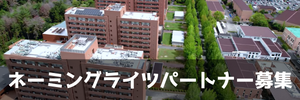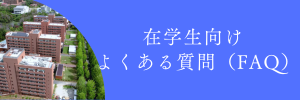(English announcement can be found in the latter half of this notice.)
第41回広島大学バイオマスイブニングセミナーのご案内
広島大学バイオマスプロジェクト研究センターと中国地域バイオマス利用研究会の共催で広島大学バイオマスイブニングセミナーを開催しています。バイオマスに関する基本的な考え方から最先端の情報までをカバーして、この地域におけるバイオマスの活動に資することを目的とするものです。
第41回を以下の日程で開催しますので、ご参集下さい。
日時 2016年4月14日(木)16:20~17:50
会場 広島大学東広島キャンパス工学部110講義室
http://hiroshima-u.jp/eng/access/lectureroom
http://hiroshima-u.jp/eng/access/building
http://hiroshima-u.jp/access/
プログラム
解説 広島大学大学院工学研究院 教授 松村幸彦
講演 広島大学大学院工学研究科 M1菱田 賢吾
「初期粒径が水熱ディスクミル前処理による生成物収率に与える影響」
リグノセルロースを用いたエタノール生産において前処理はその強固で複雑な構造を緩和する重要な過程である。これまで数々の前処理が研究されたが、酸、アルカリを用いたものは後の処理における阻害物質の生産などの問題がある。そのため粉砕、水熱処理、およびこれらを組み合わせた前処理の利用が好ましい。今回は水熱ディスクミルを用いて初期粒径が与える影響について調査した。結果、初期粒径2.0-3.0 mm のとき、糖収率が最高となり、処理後の粒径は最小となった。
講演 広島大学大学院工学研究科 M1伊藤 大志
「コンブの水熱前処理におけるウロン酸の挙動」
近年、再生可能エネルギーの利用が重要視されている。コンブのような海洋系バイオマスも再生可能エネルギーの1つである。本研究では連続式試験装置を用いてコンブの水熱前処理を行った。実験は温度170℃、圧力5 MPaで滞留時間を2.5~15分で変化をさせて行った。水熱前処理によってマンニトール及びグルロン酸が得られた。滞留時間の増加に伴いグルロン酸の回収量も増加したが、滞留時間15分でグルロン酸の回収量は減少した。
講演 広島大学大学院工学研究科 D2 Pattraporn Changsuwan
「麦焼酎残渣の固形分の超臨界水ガス化(日本蒸留酒)」
焼酎残渣固体の超臨界水ガス化は、25 MPaでの圧力と15秒の滞留時間の下で、四つの異なる反応温度(580、600、620および640ºCを)で行いました。気体、液体、固体生成物は、それぞれ、ガスクロマトグラフィー、全有機炭素分析器とCHINOSアナライザーを用いて分析しました。温度、滞留時間、および炭素ガス化効率の影響が議論されています。
講演 広島大学大学院工学研究科 特別研究学生 Poomkawee Changkiendee
「焼酎残渣の超臨界水ガス化に及ぼす加熱速度の影響」
焼酎残渣のガス化は、0.45から1.80メートルに予熱器のチューブの範囲を変更して、超臨界水で導入されました。これにより、加熱速度は15.30 K / sに38.20から変更されました。38.2から長い予熱器のチューブの長さに超臨界領域での時間の増加が原因の可能性が高いガス生産につながり26.9に加熱速度で減少します。15.30 K /秒の最低加熱と一致した1.80メートル最長予熱器のチューブの長さは、採用されたときに、ガスの収率が低下すると思われます。
司会 広島大学特別研究員 Thachanan SAMANMULYA
*なお、18:00より意見交換会(参加費 800円)を開催します。ご都合の付く方はこちらにもご参加下さい。
The 41st Hiroshima University Biomass Evening Seminar
Biomass Project Research Center, Hiroshima University, and HOSTY Association are co-organizing the Hiroshima University Biomass Evening Seminar.This seminar covers topics from the fundamentals of biomass to the latest information so that it can contribute the activities on biomass in this district.
The 41st seminar will be held as follows. Please join.
Date & Time: Thu.14 Apr, 2016 16:20-17:50
Place: Engineering 110 Lecture Room, Higashi-Hiroshima Campus, Hiroshima University
http://hiroshima-u.jp/eng/access/lectureroom
http://hiroshima-u.jp/eng/access/building
http://hiroshima-u.jp/access/
<Program>
Commentary: Yukihiko MATSUMURA
Professor, Institute of Engineering, Hiroshima University
Lecture: Kengo HISHIDA
M1 Student, Graduate School of Engineering, Hiroshima University
“Effect of Initial Grain Size on Product Yield under Hydrothermal Disk Milling”
Pretreatment of lignocellulosics for ethanol production is needed to loosen its rigid and complex structure to enhance enzymatic hydrolysis.Various pretreatment technologies have been studied. However, pretreatment using acid or alkaline has problems such as formation of inhibiting compounds for saccharification.In this sense, hydrothermal pretreatment, pulverization, or those combination pretreatments are more favorable. In this study, the effect of initial grain size on product yield was studied using hydrothermal disk milling for pretreatment.The result showed that 2.0-2.8 mm initial grain size showed the highest glucose yield, showing the lowest particle size after the treatment.
Lecture: Hiroshi ITO
M1 Student, Graduate School of Engineering, Hiroshima University
“Behavior of Uronic Acid during Hydrothermal Pretreatment of Kelp”
Recently, using the renewable energy is important. The marine biomass is one of the renewable energy.Kelp is a type of brown algae included in marine biomass, natural crop yields in japan account for more than 70 %.In this research, kelp was treated by continuous flow reactor under hydrothermal condition. The experimental condition, temperature is 170 ℃, the operating pressure is 5 MPa, and residence time is between 2.5 and 15 min.Finally, mannitol and guluronic acid (GA) was obtained. Recovery of GA was decreased in accordance with the residence time became longer, but at 15 min, the amount of GA decreased.
Lecture: Pattraporn CHANGSUWAN
D2 Student, Graduate School of Engineering, Hiroshima University
“Supercritical water gasification of solid components in barley shochu residue (Japanese Distilled Liquor)”
Supercritical water gasification of shochu residue solid was conducted at four different reaction temperatures (580, 600, 620 and 640 ºC), under a pressure of 25 MPa and residence time of 15 s. The gas, liquid, and solid products were analyzed by using gas chromatography, total organic carbon analyzer and CHNOS analyzer, respectively. The effect of temperature, residence time, and carbon gasification efficiency are discussed.
Lecture: Poomkawee CHANGKIENDEE
Special Research Student, Graduate School of Engineering, Hiroshima University
“Effect of Heating Rate on Supercritical Water Gasification of Shochu Residue”
Gasification of shochu residue was introduced in supercritical water with changing the preheater tube range from 0.45 to 1.80 m. Consequently, the heating rate was changed from 38.20 to 15.30 K/s. Decrease in heating rate from 38.2 to 26.9 led to higher gas production, possibly due to increase in time in supercritical region in longer preheater tube length. When the longest preheater tube length of 1.80 m, which was consistent with the lowest heating of 15.30 K/s, was employed, the gas yield seems to decrease.
Chair: Thachanan SAMANMULYA (Special Postdoctral Researcher, Hiroshima University)
*We will hold the discussion meeting from 18:00 (800 JPY needed). Join this meeting, too if you are available.


 Home
Home




